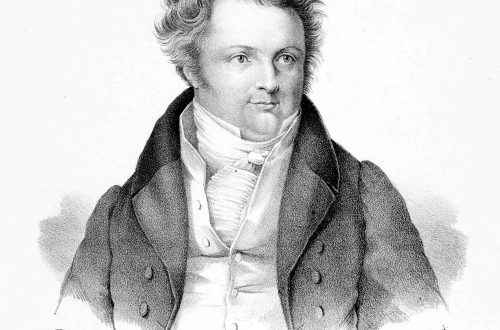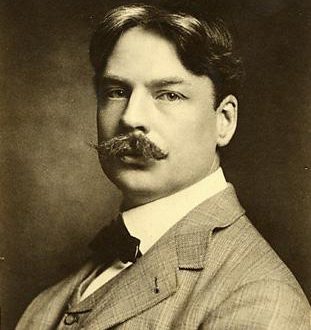
Stepan Ivanovich Davydov |
Stepan Davydov
The activities of the talented Russian composer S. Davydov proceeded at a turning point for the art of Russia, at the turn of the XNUMXth and XNUMXth centuries. It was a difficult period of breaking the old classicist traditions and the emergence of new tendencies of sentimentalism and romanticism. Brought up on the principles of classicism, on the music of B. Galuppi and G. Sarti, Davydov, as a sensitive artist, could not pass by the new trends of his time. His work is replete with interesting searches, subtle foresight of the future, and this is his main concern for art.
Davydov came from a small local Chernigov nobles. Among the singers selected in Ukraine, he, a musically gifted boy, arrived in St. Petersburg at the end of 1786 and became a student of the Singing Chapel. In this only “musical academy” in the capital, Davydov received a professional education. From the age of 15 he composed sacred music.
His first opuses on spiritual texts were performed in kaghella concerts, often in the presence of royalty. According to some reports, Catherine II wanted to send Davydov to Italy to improve his composing skills. But at that time, the famous Italian composer Giuseppe Sarti arrived in Russia, and Davydov was assigned to him as a pensioner. Classes with Sarti continued until 1802 until the departure of the Italian maestro to his homeland.
During the years of close contact with the teacher, Davydov entered the circle of the St. Petersburg artistic intelligentsia. He visited the house of N. Lvov, where poets and musicians gathered, became friends with D. Bortnyansky, with whom Davydova was connected by “sincere and constant affection and mutual respect.” During this first “training” period, the composer worked in the genre of spiritual concerto, revealing a brilliant mastery of the form and technique of choral writing.
But Davydov’s talent shone most brightly in theatrical music. In 1800, he entered the service of the Directorate of the Imperial Theaters, replacing the deceased E. Fomin. By order of the court, Davydov wrote 2 ballets – “Crowned Goodness” (1801) and “The Sacrifice of Gratitude” (1802), which were held with notable success. And in the next work – the famous opera “Mermaid” – he became famous as one of the creators of the new romantic genre of “magic”, fairy-tale opera. This work, the best in the composer’s work, is essentially a large theatrical cycle, consisting of four operas. The source was the singspiel of the Austrian composer F. Cauer to the text of K. Gensler “Danube Mermaid” (1795).
The writer and translator N. Krasnopolsky made his own, Russian version of Gensler’s libretto, he transferred the action from the Danube to the Dnieper and endowed the heroes with ancient Slavic names. In this form, the first part of Cauer’s opera entitled “The Dnieper Mermaid” was staged in St. Petersburg. Davydov acted here as the editor of the score and the author of the insert numbers, enhancing the Russian national character of the performance with his music. The opera was a huge success, which forced the librettist to continue his work. Exactly one year later, the second part of Kauer’s singspiel appeared on the scene, reworked by the same Krasnopolsky. Davydov did not participate in this production, because in April 1804 he was dismissed from service in the theater. His place was taken by K. Cavos, who composed interpolated arias for the opera. However, Davydov did not leave the idea of opera, and in 1805 he wrote the entire music for the third part of the tetralogy to Krasnopolsky’s libretto. This opera, completely independent in composition and given the new name Lesta, the Dnieper Mermaid, was the pinnacle of the composer’s work. A splendid ensemble cast, sumptuous staging, ballet scenes beautifully choreographed by choreographer A. Auguste, Davydov’s bright, colorful music all contributed to the enormous success of Lesta. In it, Davydov found new musical and dramatic solutions and new artistic means, combining 2 plans of action – real and fantastic. With exciting power he conveyed the drama of a simple peasant girl Lesta, who became the mistress of mermaids, and her lover, Prince Vidostan. He also succeeded in characterizing the comic hero – the servant of Tarabar. Capturing a wide range of feelings of this character – from panic fear to unbridled joy, Davydov noticeably anticipated the image of Glinka’s Farlaf. In all vocal parts, the composer freely uses the musical vocabulary of his era, enriching the operatic language with Russian folk song intonations and dance rhythms. The orchestral episodes are also interesting – picturesque pictures of nature (dawn, thunderstorms), bright coloristic finds in the transfer of the “magic” layer. All these innovative features made Lesti Davydov the best fairy tale opera of that time. The success of the opera contributed to the return of Davydov to serve in the Theater Directorate. In 1807, he wrote music for the last, fourth part of “Mermaid” to an independent text by A. Shakhovsky. However, her music has not completely reached us. It was the last work of the composer in the operatic genre.
The onset of the terrible time of the Napoleonic Wars demanded a different, patriotic theme in art, reflecting the general upsurge of the popular movement. But this heroic theme at that time had not yet found its embodiment in the opera. It manifested itself most clearly in other genres – in “tragedy on music” and in folk divertissement. Davydov also turned to “tragedy in music”, composing choirs and intermissions for the tragedies “Sumbeka, or the Fall of the Kazan Kingdom” by S. Glinka (1807), “Herod and Mariamne” by G. Derzhavin (1808), “Electra and Orestes” by A. Gruzintsev (1809). In the musical embodiment of heroic images, Davydov relied on the style of K. V. Gluck, remaining on the positions of classicism. In 1810, the final dismissal of the composer from the service followed, and since then his name has disappeared from theater posters for several years. Only in 1814 did Davydov again appear as the author of stage music, but in a new divertissement genre. This work unfolded in Moscow, where he moved in the autumn of 1814. After the tragic events of 1812, artistic life gradually began to revive in the ancient capital. Davydov was hired by the Office of the Moscow Imperial Theater as a music teacher. He brought up outstanding artists who made the glory of the Moscow opera troupe – N. Repina, P. Bulakhov, A. Bantyshev.
Davydov created music for several then popular divertissements: “Semik, or Walking in Maryina Grove” (1815), “Walking on the Sparrow Hills” (1815), “May Day, or Walking in Sokolniki” (1816), “Feast of the Colonists” ( 1823) and others. The best of them was the play “Semik, or Walking in Maryina Grove”. Associated with the events of the Patriotic War, it was sustained entirely in the spirit of the people.
From the divertissement “First of May, or Walking in Sokolniki”, 2 songs were especially popular: “If tomorrow and bad weather” and “Among the flat valley”, which entered the city life as folk songs. Davydov left a deep mark on the development of Russian musical art of the pre-Glinka period. An educated musician, a talented artist, whose work was nourished by Russian national origins, he paved the way for Russian classics, in many respects anticipating the figurative structure of the operas by M. Glinka and A. Dargomyzhsky.
A. Sokolova





